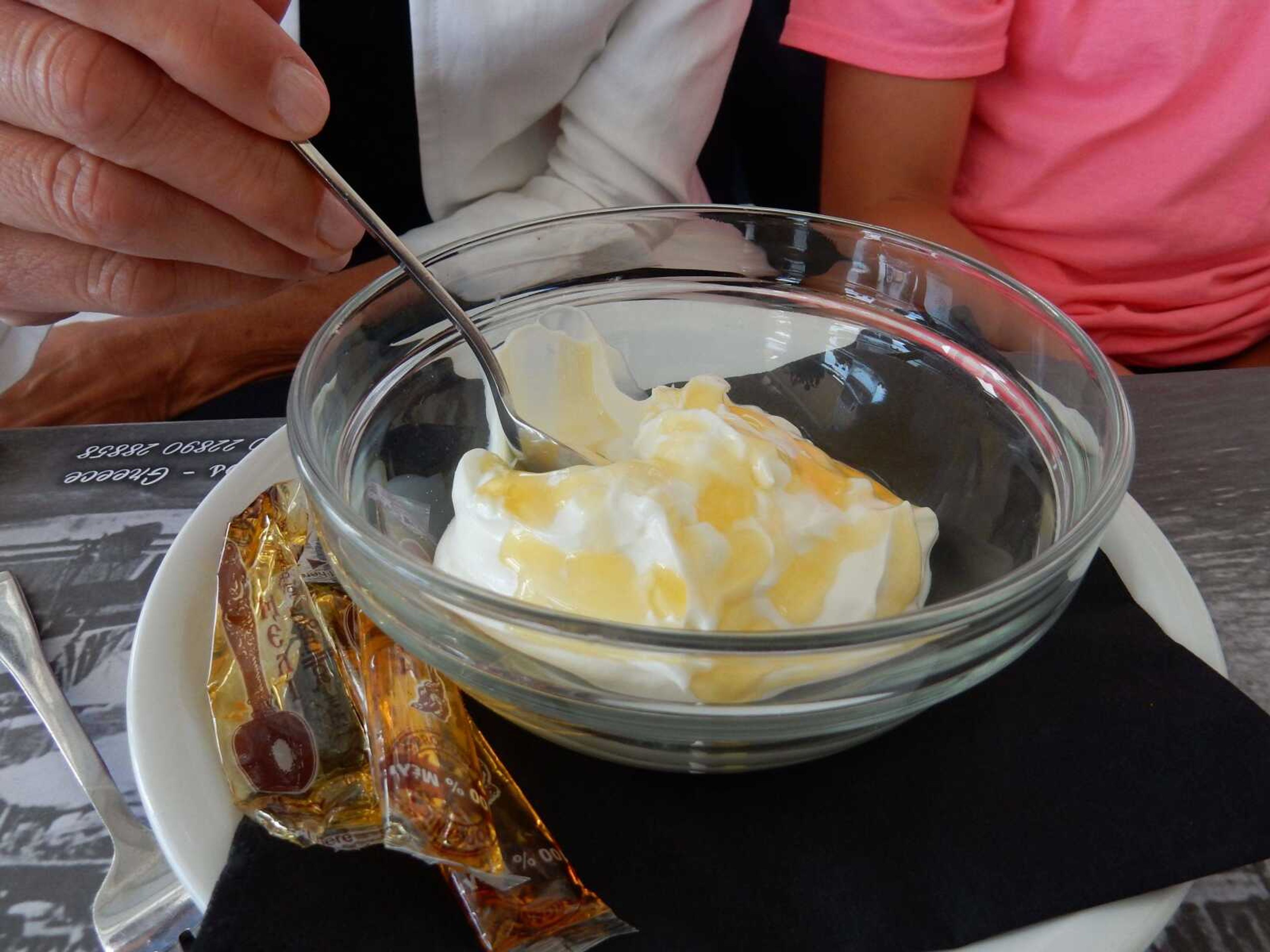Ancient discovery
Where would you find the most authentic Chicken Kiev? Probably Russia. The definitive Peking Duck? Certainly Beijing. The perfect Swedish Meatballs? Obviously Sweden. Or maybe Ikea. And where would you go to find the ultimate Greek yogurt? Having just returned from Greece, I now realize that's not so easy a question to answer...
By Tom Harte
Where would you find the most authentic Chicken Kiev? Probably Russia. The definitive Peking Duck? Certainly Beijing. The perfect Swedish Meatballs? Obviously Sweden. Or maybe Ikea.
And where would you go to find the ultimate Greek yogurt? Having just returned from Greece, I now realize that's not so easy a question to answer.
Of course, you can get what we call Greek yogurt in Greece, and it's the best you'll ever taste, but they don't label it "Greek" there. Rather, it's called "straggisto" or strained yogurt and, despite what marketers in this country might have us think, it's nothing revolutionary. "Unaware that this is the normal manner in which most people eat yogurt from Central Asia to the Balkans," writes Anne Mendelson in the Oxford Companion to Sugar and Sweets, "American consumers greeted this 'Greek yogurt' as an exciting new discovery."
Thus, as my friend Manny Katinas, a wonderful cook of Greek descent, grumbles, Greek yogurt takes its place alongside Boston Market's roast chicken with lemon and oregano, Starbuck's Americano coffee, and just about any restaurant's salad with feta cheese as Hellenic culinary inventions exploitatively marketed in this country to the tune of billions of dollars. All ideas, as he puts it, that the Greeks let get away.

He can still remember his yiayia (grandmother) and father stirring and mixing for hours over the stove to produce yogurt which was poured into crystal glasses and then covered with towels and allowed to thicken as moisture was wicked away. Not a lot of people do that anymore, not even Manny, who has "Greek" yogurt practically every day -- from the supermarket.
He is not alone. Once a niche product that you had to go to a specialty store to find, Greek yogurt now constitutes 40 percent of the U.S. yogurt market. Its defining characteristic, of course, is its thickness (the word yogurt itself derives from a Turkish verb meaning to thicken), more on the order of crème-fraiche, mayonnaise, or even clotted cream than regular yogurt. Strained long enough it can even be thick enough to cut with a knife. In fact, at that point you have the basis of something that is now being marketed as Greek cream cheese.
But for the Greeks this is nothing new. Their yogurt has an ancient heritage. Its origin can be traced back to an accidental discovery around 6000 B.C., when milk storage in warm climates was, like a lot of things back then, rather primitive. The milk fermented and people began to notice that it kept longer and tasted pretty good as well.
By the time Pliny the Elder wrote about yogurt, his being the oldest known discussion of the subject, it was the first century A.D., so the stuff had already been around for several millennia.
But it wasn't until the 16th century that yogurt was introduced to the rest of the world when, some 416 years before the birth of Activia spokesperson Jamie Lee Curtis, it was used to successfully treat the French king Francois I for diarrhea.

And it wasn't until the 20th century that yogurt caught the attention of Americans, and not until the 21st century that, thanks to Fage and Chobani, with a little help from Trader Joe's and Whole Foods, that Greek yogurt became a sensation.
Meanwhile, over in Greece, they've been enjoying yogurt all along, and though they don't call it that, it's all Greek to them.
Beet Tzatziki
The most classic use of Greek yogurt, tzatziki is typically made with cucumbers, but it can be made with beets, as in this colorful recipe adapted from the Chobani Company.


- 1 cup plain Greek yogurt
- 3 medium red beets
- 2 tablespoons olive oil, divided
- 3 sprigs fresh thyme
- 1 1/2 tablespoons chopped dill
- 2 tablespoons chopped mint
- 3 tablespoons chopped chives
- salt and pepper
Drain yogurt overnight in the refrigerator. Toss beets with 1 tablespoon oil, season with salt and pepper, wrap individually in foil with a sprig of thyme, and roast at 350 degrees until tender, about 30 minutes to an hour. Cool, peel and mince. Combine with drained yogurt, remaining tablespoon oil, mint and chives, season with salt and pepper, and mix well. Serve with pita bread.
Connect with the Southeast Missourian Newsroom:
For corrections to this story or other insights for the editor, click here. To submit a letter to the editor, click here. To learn about the Southeast Missourian’s AI Policy, click here.











